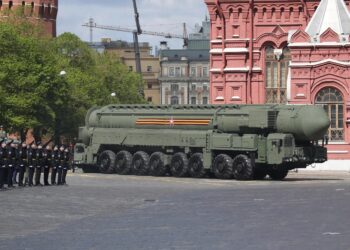Agence France-Presse,
MIAMI: Security experts from around the world will meet Monday in Miami to discuss how to boost cooperation between governments to better confront the threat of nuclear terrorism.
The International Nuclear Terrorism Law Enforcement Conference aims to provide “law enforcement and Homeland Security officials with the proper tools to prevent, detect, disrupt, and deny terrorists from seeking, acquiring, or using nuclear materials,” said event organizer, Federal Bureau of Investigation.
The meeting falls under the scope of the Global Initiative to Combat Nuclear Terrorism announced last year by US President George W. Bush and Russian President Vladimir Putin during the Group of Eight summit in St. Petersburg, Russia.
The two leaders said the initiative was aimed at motivating all nations to cooperate in preventing access to nuclear materials by terrorist groups.
The meeting, lasting nearly a week, will include conferences on smuggling trends and detection of nuclear material around the world, border security, improvised nuclear devices and “dirty bombs” (bombs that spread radiation).
“The evolving terrorist methodology — a reliance on suicide missions and a premium on the spectacular — leaves many experts worried that the next 9-11 might include nuclear materials,” said The Bulletin of Atomic Scientists, referring to the September 11, 2001 terrorist attacks on the United States.
The bulletin last year moved its “Doomsday Clock” from seven minutes to five minutes to midnight, to stress the increased threat of nuclear catastrophe the world is facing.
Security experts agree that a terrorist attack with nuclear weapons is highly unlikely but not impossible, and that it is much easier than imagined.
To prevent it, countries that stock nuclear-weapons-grade materials, such as highly enriched uranium or plutonium, must do everything in their power to keep them out of reach of potential terrorists, experts say.
“If the terrorists don't get nuclear material they can't make a nuclear weapon. And that is the thing that we do have within our capacity to make a lot harder,” said Laura Holgate, from the Nuclear Threat Initiative founded in 2000 by billionaire Ted Turner to research the issue.
“If they get that material, then it's not simple but it's certainly doable that they turn that material into a weapon,” Holgate said.
When the US Manhattan Project began investigating the atomic bomb in the 1940s, most of the work focused on developing explosive material, she said.
“The bomb design … was so straightforward that we didn't even test the design of the bomb we used in Hiroshima, and that design has been in the public realm for years,” Holgate added.
All you need to build an atomic bomb is money, an organization, a supply chain, experts in electronics, high explosives and machining metal, and transportation, she said.
The fuel for a nuclear device can be found in civilian research facilities, including university research centers with nuclear reactors, that are “not protected at the level of a military installation,” Holgate said.
The United States is focusing on security measures at port facilities here and abroad where more than 20 million US-bound containers arrive each year. There are security arrangements with 40 nations and nuclear material detectors at many facilities.
But it's too dangerous to wait for smuggled nuclear material to reach US territory before seizing it, Holgate said.
“The real point is to secure it where it sits,” she added.









